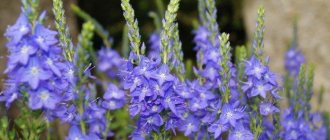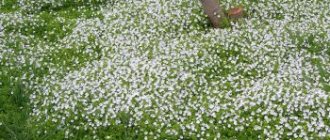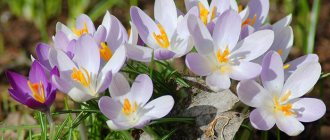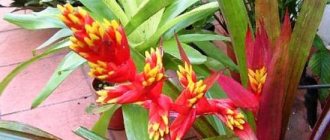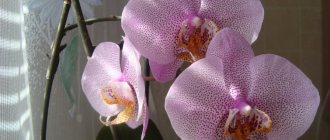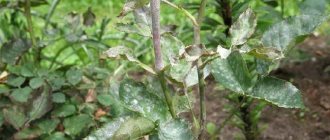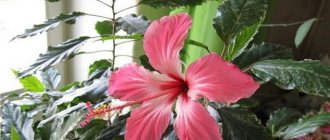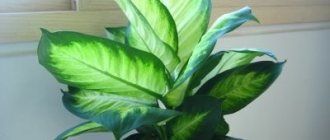Characteristic
Veronica gray is a perennial herbaceous plant, which is colored in grayish tones and is densely white-tomentose. The height of this plant will be approximately twenty to sixty centimeters. The leaves of gray Veronica will be opposite, as well as lanceolate and oblong-ovate, and in addition also acuminate. The flowers of this plant are painted in bright blue tones; such flowers are collected in very beautiful single spike-shaped racemes. Gray Veronica blooms from May to June. Under natural conditions, the plant is found in the Siberian Arctic, namely in the lower reaches of the Kolyma, as well as in Ukraine, Belarus, Eastern Siberia, the Far East, in the Eastern Arctic in the Anadyr River basin, and in addition to this also in Western Siberia in all areas with the exception of the Ob region. In the European part of Russia, this plant can be found in all regions, with the exception of the Dvina-Pechora and Karelo-Murmansk regions. The plant prefers rocky limestone and steppe slopes, as well as dry pine forests, saline meadows and dry river beds. It is noteworthy that gray speedwell is also an ornamental plant.
Veronica gray
Gray speedwell Veronica incana L. Norichinaceae family - Scrophulariaceae
Status. 3rd category. A rare species distributed in a limited area.
Spreading:
Euro-Asian species. In Russia it grows in the southern part of the forest zone and in the forest-steppes of the European part. Recorded in adjacent territories in Kaluga, Tula, Ryazan and Tver regions. In the Moscow region, it is occasionally found in the southern regions - Serpukhovsky, Lukhovitsky, Zaraisk, Kolomensky, Egoryevsky and Naro-Fominsky; indicated for Ozersky and Serebryano-Prudsky districts. In total, about 10 locations are known. The first mention for the Moscow region was in 1824–1826. (herbarium of M.A. Maksimovich) (1–8).
Number and trends of its change
The number is small and tends to decrease as a result of anthropogenic impacts in the places where it grows. Most of the previously known locations still exist today.
Features of biology and ecology
Perennial densely pubescent herbaceous plant up to 40 cm tall. The leaves and sepals are gray and white tomentose. There are two types of shoots: shortened vegetative and elongated generative (with an apical racemose inflorescence). The flowers are bright blue (1, 3). It blooms from the end of June to September, bears fruit from the end of August. Propagated by seeds and vegetatively (rhizomes) (2, 9). It is found in dry pine forests, on the edges, and in steppe areas (with fescue and feather grass). It is cold-resistant, has wintering shoots, the leaves can live up to two years.
Limiting factors
Mainly cutting down pine forests and plowing steppe areas.
Security measures taken
Listed in the Red Books of adjacent regions: Kaluga (2006) and Tver (2002). In the Moscow region, habitats are protected on the territory of the PTZ and one reserve in the Lukhovitsky district.
Recommendations for the conservation of the species in cultural conditions
Monitoring the state of populations. Organization of protected areas for the conservation of the entire complex of “Oka flora”.
Recommendations for the conservation of the species in cultural conditions
Can be used as an ornamental plant; grown in botanical gardens. It is advisable to preserve the gene pool of a species under cultural conditions.
Information sources
Red Book of the Moscow Region 1. Identifier of Meshchera plants; 2. Tikhomirov, 1963; 3. Alekseev, Gubanov, 1980; 4. Alekseev, Karpukhina et al., 1992; 5. Kaufman, 1866; 6. Smirnov, 1958; 7. Petunnikov, 1900; 8. Skvortsov, 1951; 9. Tikhomirov, 1969a. Compiled by M.G. Vakhrameeva.
AOF | 01/27/2016 14:25:06
Used
For medicinal purposes, you should use the leaves, stems and flowers of Veronica gray. An infusion prepared from the herb Veronica grey, helps remove mucous secretions from the respiratory organs. In addition, this infusion also has the ability to increase appetite, and also stimulates the activity of various glands. In addition, gray speedwell is also characterized by hemostatic, analgesic, anti-inflammatory, analgesic, antiseptic, anticonvulsant, antitoxic, blood purifying, wound healing and fungicidal effects. In folk medicine, infusion and decoction of this plant are recommended for use in various kidney diseases, metabolic disorders, gout, liver diseases, gastrointestinal and cardiovascular diseases. Also, this remedy has shown its effectiveness in bronchitis, neurosis, cough, bronchial asthma, headaches, various eye diseases, pulmonary tuberculosis, bronchitis, chronic skin diseases, as well as hypertension. As for the herbal infusion, it is often used as a detoxifying agent for bites of both rabid animals and poisonous snakes. Externally, this infusion is used to treat acne, ulcers, wounds, burns and dermatomycosis. In this case, for purulent wounds, it is recommended to use powdered Veronica herb. To prepare the infusion of Veronica gray, you will need to take two teaspoons of dry crushed herb to two glasses of boiling water, the resulting mixture should be infused for two hours. It is recommended to take this remedy four times a day, an hour after finishing a meal; this remedy should be taken in half a glass. For kidney disease, you should take the following mixture: take two teaspoons of goat's milk for two teaspoons of juice squeezed from the grass. This mixture should be taken every day on an empty stomach. For smearing and rubbing for various skin diseases, you will need the following remedy: take one part of seventy percent alcohol for one part of fresh herb. This mixture is infused for ten days, and then another part of the alcohol is added and filtered. This mixture should be shaken thoroughly before use.
Source
Gray Veronica belongs to the genus Veronica, which has up to 500 species (Plantain family).
Sometimes it is also called:
- white-tomented or gray speedwell;
- gray-haired speedwell.
Description
This grass has a wide habitat: from the Arctic regions of Siberia to the Caucasus. It also grows in Ukraine and Belarus, and is found in the Far East (Sakhalin, Amur region) and the European part of Russia. Very often, gray speedwell is found on dry rocky soils, mountain slopes and in steppes (both fescue and forbs). The plant is adapted to life in salt marshes and dry river beds, and can grow in the middle and upper mountain zones.
The stems of this perennial medicinal plant reach, on average, about 50-60 cm in height. The shoots and leaves of Veronica gray are light gray (hence the name of the species), they are covered with dense white-tomentose hairs. The leaves are regular in shape, oval-oblong, with small sawtooth teeth along their edges. Bright, light blue (sometimes bluish), small flowers form a dense spike-shaped inflorescence. Each flower has four petals. Gray speedwell blooms all summer (sometimes it begins in late spring). During growth and development, the shoots of the plant form a bush.
Botanical description[edit | edit code]
The rhizome is ascending, branched, woody.
Stems 10–45 (up to 60) cm high, straight, strong, erect, simple or weakly branched. The whole plant is grayish or white, tomentose with matted, curly and thin hairs, less often greenish.
The leaves are opposite, somewhat pressed to the stem, directed obliquely upward, from ovate to oblong and lanceolate-oblong, 1.5-10 cm long, 0.5-2 cm wide, entire at the apex, in the rest of the leaves vaguely finely crenate or blunt-toothed, with a wedge-shaped base. The lower leaves are close together and form a rosette (often these leaves overwinter), from ovate to oblong, with a petiole up to 2.5 cm long, finely crenate-toothed along the edge, obtuse or rounded at the apex. The upper ones are oblong-lanceolate to lanceolate, with a petiole about 1 cm long, pointed, almost entire or entire. The uppermost ones are sessile, reduced.
The inflorescence is an apical raceme, single, rarely with two lateral branches, spike-shaped, dense, 3-10 (up to 30) cm long, 1.2-1.5 cm in diameter, sometimes discontinuous at the base. The bracts are lanceolate or superior subulate, twice as long as the pedicels, equal to or larger than the calyx, white-tomentose, without glandular pubescence. The flowers are almost sessile or on short pedicels, much shorter than the calyxes; calyx 3-4 mm long, deeply dissected into four unequal ovate-oblong or lanceolate obtuse lobes, all white-tomentose or gray pubescent; corolla 4-7 mm in diameter, wheel-shaped, blue, rarely white, almost three times as long as the calyx, with a wide tube, half as long as the limb; The corolla lobes are pointed or acute, irregular, from oblong-ovate to ovate (two lateral) and broadly ovate lobes. The stamens are straight, more or less protruding from the corolla; anthers about 1-2 mm long, ovoid.
The capsule is round, ovoid or rounded-reniform, 3-5 mm long and wide, with a rounded or short wedge-shaped base, cracking at the apex, with a narrow notch. The seeds are 0.75 mm long and 0.5 mm wide, ovoid, plano-convex or flat.
Synonyms: Pseudolysimachion incanum (L.) Holub., Veronica bellidifolia Juz., Veronica spicata subsp. incana (L.) Walters, white-tomented speedwell, daisy-leaved speedwell, silver speedwell, gray speedwell, gray speedwell, gray speedwell, gray-haired speedwell.
Gray speedwell (Veronica incana L.) is a species of plant from the genus Veronica of the Plantainaceae family. The species was first described by Carl Linnaeus in 1753 in Species Plantarum 1:10. In culture since 1759.
It grows naturally in Western Europe - in Romania, Serbia, Bulgaria, Ukraine (Chernivtsi region); in Asia - in Mongolia, China. It is found on rocky and steppe slopes, on rocks, in dry pine and deciduous forests, less often in saline meadows, in the subalpine and alpine zones, on slopes with limestone and marl, as well as on dry riverbeds.
&
It is a perennial herbaceous plant 10-45 (60) cm in height. Stems are straight, strong, weakly branched or simple, erect, grayish or white, less often greenish, tomentose; the hairs are curly and thin. The roots are woody, ascending, branched, thin.
Vasily Gelyuta
The leaves are located opposite, weakly pressed to the stem, directed upward at an acute angle, ovate, oblong or lanceolate-oblong in shape, 1.5-10 cm in length and 0.5-2 cm in width, entire at the apex, unclear-small- crenate or blunt-toothed along the edge, wedge-shaped base. The lower leaves form a rosette, often overwintering, ovate to oblong, finely crenate-toothed along the edge, obtuse or rounded at the apex; petiole up to 2.5 cm in length. The upper leaves are oblong-lanceolate to lanceolate, petiole up to 1 cm in length, entire or almost entire. The leaves at the top are reduced and sessile.
&
The flowers are collected in an apical dense single raceme, less often with 2 lateral branches, spike-shaped, 3-10 (30) cm in length, 1.2-1.5 cm in diameter, sometimes intermittent at the bottom. The bracts are lanceolate-linear in shape, the upper ones are awl-shaped, twice as long as the pedicels, equal to the calyx or slightly larger than it, white-tomentose, without glandular pubescence. The flowers are on short stalks or almost sessile, shorter than the calyxes, bright blue or bright blue. The calyx is 3-4 mm in length, deeply dissected into 4 lobes of unequal size, ovoid-oblong or lanceolate, obtuse. The corolla is tubular-campanulate. The corolla lobes are sharp or pointed, irregular, from oblong-ovate to ovoid (2 lateral) in shape and broadly ovate lobes. The stamens are straight, protruding from the corolla. The anthers are ovoid, 1-2 mm in length. Blooms in June-August.
The capsules are round, ovoid or rounded-reniform, 3-5 mm in length and width, the base is round or short wedge-shaped, cracking at the apex, with a narrow notch. The seeds are 0.75 mm long and 0.5 mm wide, ovoid, plano-convex or flat.
Number of chromosomes: 2n = 32
Subspecies:
- Veronica incana ssp. Hololeuca
- Veronica incana subsp. incana
Varieties: 'Pure Silver', 'Silver Carpet', 'Silbersee'.
Frost resistance zone: 3a (-40°C).
Location: Sun-loving, but shade-tolerant.
Soil : loves dry, rocky, light, calcareous soil. Drought resistant.
Care: virtually no maintenance required. When flowering occurs, the shoots are cut off. Does not need shelter for the winter.
Pests: gall midge Dasyneura veronicae, mites Anceria anceps.
Diseases: raspberry ring spot, mycorrhiza.
Reproduction: propagated vegetatively (cuttings), division or seeds. Seeds are sown before winter or spring. Plants grown from seeds bloom in the 2nd year. Cuttings are taken in May or June.
Usage: used in rock gardens, mixborders,
